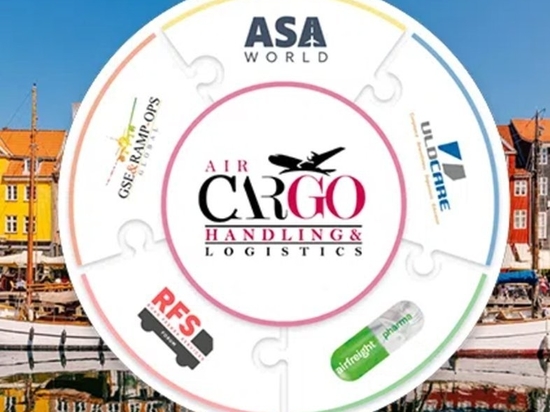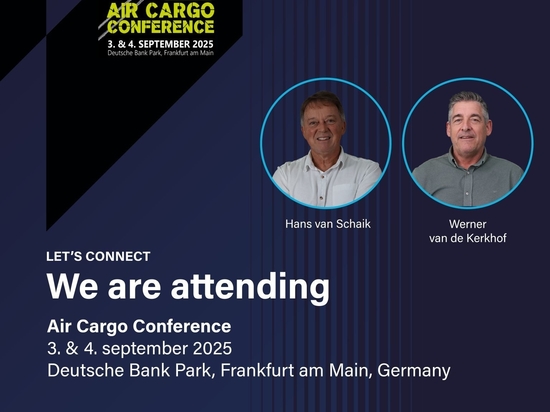
#Product Trends
Product in the spotlight: Elevating Transfer Vehicle
A more detailed description of the Elevating Transfer Vehicle
The Elevating Transfer Vehicle (ETV) is an automatic / semi-automatic / manual operated type vehicle designed and constructed to receive, hold and transfer pallets and containers along the length of track and to interface with motor powered conveyor equipment and multi-level storage deck system with friction powered roller decks.
The vehicle is an independent free standing unit with a lifting carriage with roller deck platform to transfer ULD’s between interfacing equipment systems and is equipped with friction drive extractors on both sides of the deck. An operator cabin is fitted to the ETV for semi-automatic or manual control by an operator.
Steel Structure Assembly
The ETV’s steel structure consists of two heavy duty vertical masts connected by cross beams at top and base to form a sturdy frame. This frame is designed to support and to guide the lifting carriage which carries the roller deck for the ULD transfer and the cabin.
Each mast is of a welded construction and consists of heavy duty square tubes and a base beam fabricated of steel plates. The upper cross beam is of heavy duty square hollow sections and is bolted to the top of the masts. The lower cross beam is of heavy closed profile construction, fabricated from steel plates bolted with high tensile type bolts onto the base beam of the masts.
The base frame in turn supports the four drive wheel assemblies.
Horizontal Drive Unit Arrangement
Comprising a heavy duty shop welded construction base frame supported on four wheel assemblies with heavy duty bearings and split casings for ease of maintenance and inspection. Wheel drives consist of four independent and powered units each with a geared and braked (frequency controlled) electric motor.
Braking is normally controlled by the frequency inverters and in emergencies assisted by holding brakes. The disc brakes are electro-magnetically opened and spring closed. Emergency braking is initiated by the emergency stop circuits, track obstruction sensors, near-end rail sensors, or at loss of electric power. Mechanical brake lifters are available to enable release of the disc brakes in case no electric mains power is available.
Automatic slow down and stop systems are provided at each end of the track to prevent vehicle overrun. These are initiated by the vehicle’s position detection system.
As a supplementary safety precaution, the ETV is equipped with a mechanical anti-collision system to absorb the travelling impact energy on failure of all electrical safety devices. This includes hydraulic buffers at both ends which are capable of stopping the vehicle running at full speed and preventing any damage.
Rails / power rails / position detection
The vehicle runs on and is guided by rails running the full length of the aisle. Rails are to be laid parallel with each other, anchor bolted to the concrete floor, shimmed and grouted to distribute point loads.
Electrical supply to the vehicle is achieved via a safety powered feed rail fitted at a suitable place clear of potential operational damage. Data communication between the fixed part of the handling system control and the vehicle’s control system can also be effected over this rail or via InfraRed or WIFI connections.
The vehicle’s actual horizontal position is determined by means of an absolute encoder system. Bar codes are fitted on a rail installed parallel to the power rail and a scanner is fitted to the vehicle’s frame.
Hoist / Lifting Drive Arrangement
The lifting drive includes a cable drum, geared electric motor with electro-magnetic disc brake all fixed to a heavy duty frame attached to the supporting steel structure fitted to the base frame.
Automatic safety grab systems are integrated into the lifting system to prevent collapse of the lifting carriage with roller deck and operator cabin in the event of failure of the hoist systems and to hold the carriage horizontal at all times. The ETV’s hoist system and safety collapse mechanism are load tested and certified prior to delivery to site as well as after installation.
Hoists operation and vehicle traction can be accomplished separately or simultaneously as required by the operator.
Roller Deck
we refer to the separate data sheet for a detailed description of the roller deck.
Extractors
Extractors / friction drive assemblies are fitted to either end of the roller deck to drive friction powered storage decks placed next to the ETV aisle.
The movement of the extractor assembly is hydraulically powered. One mutual hydraulic power pack with hydraulic lines to the cylinders is fitted onto the vehicle’s support structure.
When extended, the extractor will transmit rotating power to the rollers of the interfacing storage deck and transfer the ULD from or to the ETV.
The extractor drives and deck drives are independent and enable simultaneous or separate control in both directions.
Operator Cabin
An enclosed operator cabin is located at one end of the vehicle, equipped with operator controls for power on/off, deck raise/lower, longitudinal drive, docking, load unit transfer and emergency stop. The operator’s cabin automatically raises and lowers in conjunction with the roller deck platform and is equipped with windows on all sides providing good all round vision.
The cabin’s access doors are interlocked with vehicle traction drive and must be closed when the vehicle is in motion. A closed circuit television can be installed, with monitor on the platform, to allow the operator to view the blind side of the track.
The cabin is accessible from the ETV’s roller deck and from the track end of the vehicle. An escape ladder is provided for means of emergency escape from the cabin should the equipment malfunction in the raised position.
Type of controls
Three types of operation control are possible;
Manual
The vehicle is manually controllable by an operator in the cabin.
A key pad system is used to control the vehicle movement and the roller deck.
Semi-Automatic
A key pad system is used by the operator in the cabin to input the required deck location and when initiated, the vehicle and its platform automatically travels to and docks precisely at the required deck position.
Automatic ( only in combination with CHS- IT system)
Automatic remote control is available where the required deck location is downloaded from the CHS-IT system to the vehicle’s PLC control. When initiated, the vehicle and its platform automatically travels to and docks precisely at the required deck position. Automatic loading or unloading of the ULD is then affected.
Safety Systems
Safety sensors and equipment interlocks are installed on the vehicle to prevent unsafe actions arising from and including;
- traction interlock with deck drive,
- deck contour and high pallet controls,
- overhanging pallets,
- track obstructions to automatically activate emergency stop brakes.
Emergency stop “mushroom headed” press buttons are located at principal maintenance points and at the operators control console.
To maintain operational continuity during equipment malfunction various fall back systems are integrated into the design of the vehicle. These systems are “key” controlled and override normal safety systems and must only be used in extreme conditions and by a specially trained Supervisor. Fall back drive system will be provided for traction, deck drive and manual retraction of pallet stops. Tow bars will be fitted to each end of the vehicle for auxiliary equipment hook-up and towing of the vehicle the full length of the track.
Safety Sensors Overhanging pallets/containers detection
High pallet/container detection
Contour control
Track obstruction
Operator cabin door closed
Safety Systems End of Aisle Automatic Slow Down
Dead Man Controls
Platform grab, over-speed governor
Emergency Stop Buttons
Emergency Fall Back traction drive
Elevating/lowering platform
deck drive
manual pallet stop activation
Specifications
ETV 15 ft NEP (5-levels)
Capacity of the roller deck: 6,800 kg
Width: 5,400 mm
Conveying height: 508 mm
Aisle Length (nominal): 64 m
Travelling Speed: 120 m/min
Acceleration / deceleration: 0.3 m/sec²
Drive Motors (travelling): 4x ± 4 kW at 50 Hz
Lifting Speed: 20 m/min
Drive Motor (lifting): ± 30 kW at 50 Hz
Lifting Heights;
1st level 508 mm
2nd level 4,000 mm
3rd level 6,100 mm
4th level 8,200 mm
ETV head room: ± 13,000 mm
Drive Motor (extractor friction drive): 2x 1.1 kW












